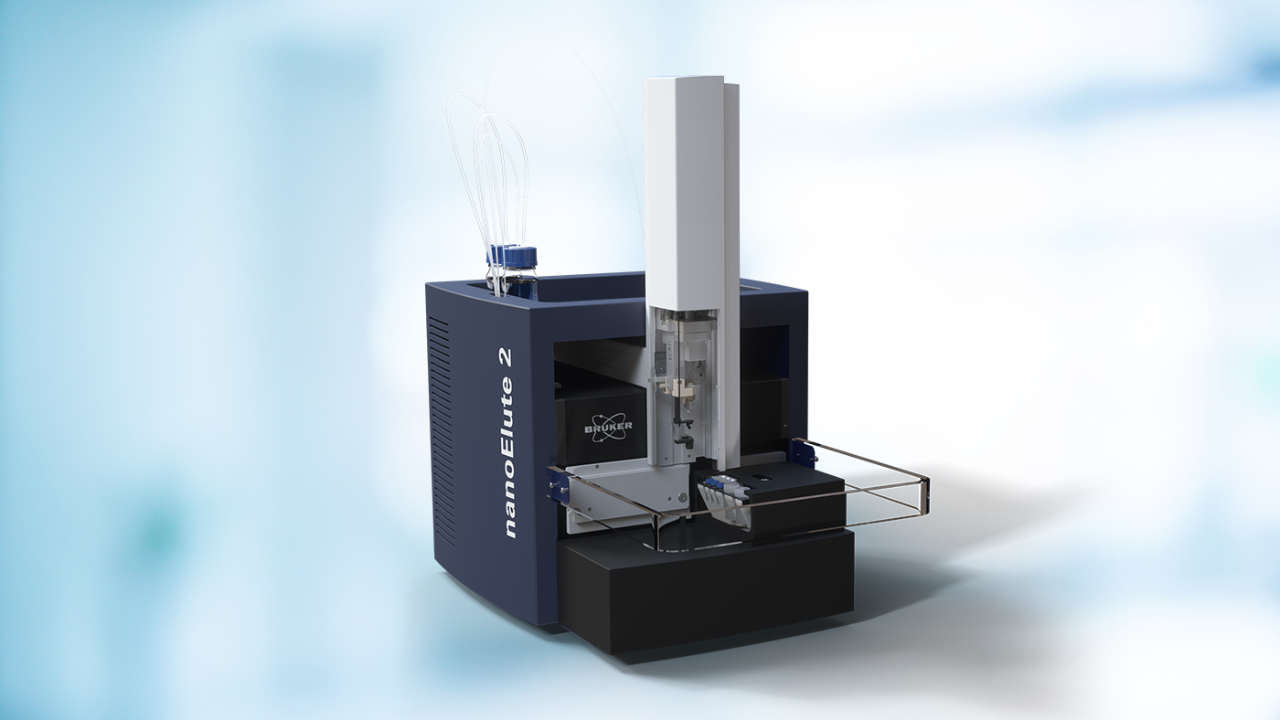

Precision Immunopeptidomics with Mass Spectrometry
Immunopeptidomics
Immunopeptidomics, a rapidly growing field of proteomics, plays a vital role in identifying and quantifying immunopeptides presented by major histocompatibility complex (MHC) molecules on the cell surface to the immune system. The peptide display-recognition system enables T cells to identify foreign invaders, initiating immune response. The identification and characterization of these MHC-bound peptides, containing neoantigens, are essential for developing personalized
immunotherapies for cancer and gaining insights into various diseases' pathogenesis. Immunopeptidomics enables researchers to identify the peptides presented by cells to the immune system, aiding in vaccine development, understanding autoimmune diseases, and advancing cancer immunotherapy.
Overcoming challenges in immunopeptidomics research
While mass spectrometry (MS) is an invaluable analytical tool that enables the measurement of the mass-to-charge ratio (m/z) of molecules in many sample types. It has emerged as a prominent choice for immunopeptidomics, a field that focuses on studying the peptides involved in immune responses. However, researchers in this field encounter distinct challenges that need to be addressed, which include:
- Complexity of peptide mixtures: Immunopeptidomics samples often consist of complex peptide mixtures and a large concentration range. Identifying and quantifying low-abundant peptides in the presence of high abundant peptides can be challenging.
- Low abundance of MHC-bound peptides: Peptides presented by MHC molecules on cell surfaces are typically present at very low levels. Traditional MS methods may struggle to detect and identify them effectively.
- Peptide sequence diversity: MHC molecules can bind to a diverse range of peptides of similar length, which makes identifying and quantifying all peptides in a sample challenging.
- Data analysis: Immunopeptidomics data is complex, and peptide source is often unknown. Specialized software and bioinformatics tools are essential to extract meaningful insights from the data.
The winning combination for your research needs. Experience unmatched sensitivity and streamline your research workflows with the 4D-Proteomics™ Ecosystem by Bruker.
Our comprehensive solution integrates cutting-edge technologies such as PepSep™ ULTRA HPLC columns, CaptiveSpray 2 and CaptiveSpray Ultra, and Bruker ProteoScape™ with BPS Novor de novo module. With the added advantage of directDIA+ from Biognosys Spectronaut® and the MS-based CRO service, Biognosys TrueDiscovery™, you can unlock the full potential of our ecosystem for high-quality and reproducible data generation. Discover new insights and advance your understanding of complex biological systems, paving the way for revolutionary precision medicine and advancing immunotherapy. Join the ranks of empowered researchers who are driving scientific breakthroughs with the 4D-Proteomics™ Ecosystem by Bruker.
Ultimate immunopeptidomics separation
PepSep™ ULTRA is a specialized chromatography column for the separation of MHC-bound peptides, single cell and other low sample input applications.
The PepSep™ ULTRA column is designed to achieve deeper coverage, higher throughput, and better identification from routine to restricted sample types. When combined with the Bruker 4D-Proteomics™ Ecosystem, PepSep™ ULTRA offers a powerful solution for immunopeptidomics sample preparation.
Ultra sensitivity for true discovery
The timsTOF mass spectrometers, powered by trapped ion mobility spectrometry (TIMS) technology, offer significant advantages for immunopeptidomics data acquisition. TIMS separates ions based on their mobility, enhancing sensitivity and peak capacity. It enables precise targeting of low-abundance MHC class I peptides and accurate identification of highly similar peptides using MOMA capabilities.
High-speed sequencing with timsTOF captures rapid changes in immune responses, providing real-time immunopeptidome profiles. PASEF® technology, combined with TIMS, allows for efficient detection and isolation of ions of interest.
The nanoflow sensitivity of the CaptiveSpray 2 and CaptiveSpray Ultra ion sources in the timsTOF allows for the analysis of low-abundance proteins. With 4D-Proteomics™, timsTOF offers enhanced peptide separation, discrimination of highly similar peptides, and comprehensive peptidome profiling. These capabilities advance our understanding of complex biological systems and contribute to immunotherapy advancements and biomarker identification.
Advance your understanding of complex biological systems, drive success in immunopeptidomics, and make significant contributions to various diseases' diagnosis and therapeutic development with the timsTOF series.
"De novo searches have been a critical aspect in my labs research for many years, the ability to have an algorithm that delivers results with accuracy and precision at the speed of acquisition means we can assess immunopeptidomics samples at scale and in real time. This has major implications in how fast my group can translate research findings into actionable information, and it pushes this workflow ever closer to delivering clinical impact of these analyses on an unprecedented timescale."
Prof. Anthony W. Purcell, Head of Immunoproteomics Laboratory, Monash University
Revolutionize your immunopeptidomics research with timsTOF Ultra and BPS Novor
Immunopeptidomics research requires sensitivity and precision. With timsTOF Ultra and Bruker ProteoScape™ Novor, you can investigate the immunopeptidome with minimal cell amounts, unlocking breakthrough discoveries in personalized medicine.
Unmatched sensitivity for low abundances
The unique TIMS-enabled specificity of timsTOF Ultra allows confident identification of MHC-bound peptides, even at low abundances. Combined with BPS Novor, it provides a powerful tool for studying challenging-to-detect MHC-bound peptides.
Unparalleled precision
Integrating BPS Novor, a timsTOF optimized de novo sequencing engine, enables real-time de novo sequencing on the timsTOF platform. It consistently outperforms standard Novor, addressing challenges in non-canonical protein investigations.
Supercharged performance and convenience
- Unrivaled speed and versatility: BPS Novor delivers rapid results and unmatched flexibility with processing speed exceeding 1000 spectra/sec, surpassing competing products by 20x.
- Run & Done: Unlock new possibilities for 4D-Proteomics™ applications with seamless Run & Done capabilities.
- Enhanced sensitivity in real-time: Paired with PASEF® technology on timsTOF, Bruker ProteoScape™ integrates a fast, accurate peptide de novo sequencing algorithm for enhanced sensitivity.
Limitless processing power for immunopeptidomics
Immunopeptidomics analysis made easier with Spectronaut® by Biognosys. The advanced data-independent acquisition (DIA) approach revolutionizes the detection of low-abundance peptide antigens bound to MHC molecules. Spectronaut is the best ally for library generation and analysis of DIA immunopeptidomics data. Say goodbye to the complexities of immunopeptidomics samples and experience unmatched sensitivity.
Overcome the computational challenges of immunopeptidomics with Spectronaut 18 cutting-edge solutions. The Linux- and cloud-compatible installations maximize your resources, while the novel directDIA+™ processing pipeline optimizes time utilization to enable data analysis to start as soon as the first sample is acquired. No more waiting for the entire acquisition to finish.
The result? Streamlined processes and actionable data in record time. Spectronaut® library-based solution is the gold standard for immunopeptidomics, and directDIA+™ empowers a library-free approach. Experience over 80% of your experiment's analysis completed by the time acquisition is done.
Unlock your drug discovery potential
Even with MS instruments and expertise available in-house, outsourcing certain research to a specialist MS-based CRO service provider can be valuable. Biognosys can help secure overflow capacity, conduct large-scale studies that need faster turnaround time, or access novel workflows.
Biognosys’ TrueDiscovery™ Immunopeptidome Profiling service, powered by Spectronaut®, offers cutting-edge performance for identifying Class I and Class II peptides relevant to your drug discovery research. The workflow deploys an optimized high-throughput pipeline including proprietary, highly sensitive enrichment and identification of immunopeptides, to enable reproducible identification and quantification from minimal sample material.
The service can be applied in large-scale studies and is ideal for researchers looking for an unbiased discovery solution.
More literature
- Xu Peng et al., Novel canonical and non-canonical viral antigens extend current targets for immunotherapy of HPV-driven cervical cancer. Cell Press (2023)
- Naomi Hoenisch Gravel et al., timsTOF mass spectrometry-based immunopeptidomics refines tumor antigen identification. Research Square Preprint (2023)
- David Gomez-Zepeda et al., Thunder-DDA-PASEF enables high-coverage immunopeptidomics and identifies HLA class-I presented SarsCov-2 spike protein epitopes. Research Square Preprint (2023)
- Kshiti Meera Phulphagar et al., Sensitive, high-throughput HLA-I and HLA-II immunopeptidomics using parallel accumulation-serial fragmentation mass spectrometry. BioRxiv Preprint (2023)
For Research Use Only. Not for use in clinical diagnostic procedures.





